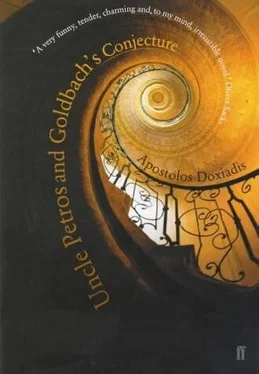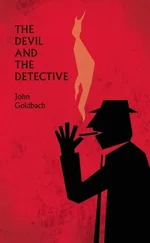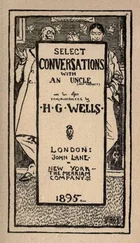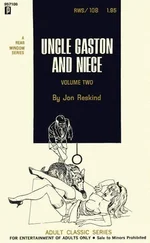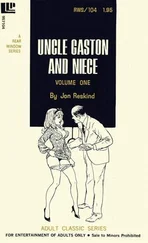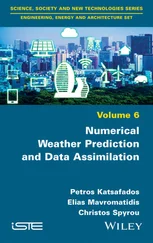The offer of the Chair of Analysis at Munich University had come a bit earlier, at just the right moment. It was an ideal position. The rank of full professor, an indirect reward for the military usefulness of the Papachristos Method to the Kaiser's army, would grant Petros freedom from an excessive teaching load and provide financial independence from his father, should he ever get the notion of attempting to lure him back to Greece and the family business. In Munich, he would be practically free of all irrelevant obligations. His few lecture hours would not be too much of an intrusion on his private time; on the contrary they could provide a constant, living link with the analytic techniques he would be using in his research.
The last thing Petros wanted was to have others intruding on his problem. Leaving Cambridge, he had deliberately covered his tracks with a smokescreen. Not only did he not disclose to Hardy and Littlewood the fact that he would henceforth be working on Goldbach's Conjecture, but he led them to believe that he would be continuing work on their beloved Riemann Hypothesis. And in this too, Munich was ideal: its School of Mathematics was not a particularly famous one, like that of Berlin or the near-legendary Göttingen, and thus it was safely removed from the great centres of mathematical gossip and inquisitiveness
In the summer of 1919, Petros settled in a dark second-floor apartment (he believed that too much light is incompatible with absolute concentration) at a short walk from the university. He got to know his new colleagues at the School of Mathematics and made arrangements regarding the teaching programme with his assistants, most of them his seniors. Then he set up his working environment in his home, where distractions could be kept to a minimum. His housekeeper, a quiet middle-aged Jewish lady widowed in the recent war, was told in the most unambiguous manner that once he had entered his study he was not to be disturbed, for any reason on earth.
After more than forty years, my uncle still remembered with exceptional clarity the day when he began his research.
The sun had not yet risen when he sat at his desk, picked up his thick fountain pen and wrote on a clean, crisp piece of white paper:
STATEMENT: Every even number greater than 2 is the sum oftwo primes.
PROOF: Assume the above Statement to be false. Then, there is an integer n such that 2n cannot be expressed as the sum oftwo primes, i.e.for every prime p ‹ In, 2n-p is composite…
After a few months of hard work, he began to get a sense of the true dimensions of the problem and sign-posted the most obvious dead-ends. He could now map out a main strategy for his approach and identify some of the intermediate results that he needed to prove. Following the military analogy, he referred to these as the 'hills of strategie importance that had to be taken before mounting the final attack on the Conjecture itself'.
Of course, his whole approach was based on the analytic method.
In both its algebraic and its analytic versions, Number Theory has the same object, namely to study the properties of the integers, the positive whole numbers 1,2,
3,4,5… etc as well as their interrelations. As physical research is often the study of the elementary particles of matter, so are many of the central problems of higher arithmetic reduced to those of the primes (integers that have no divisors other than 1 and themselves, like 2, 3,5, 7,11…), the irreducible quanta of the number system.
The Ancient Greeks, and after them the great mathematicians of the European Enlightenment such as Pierre de Fermat, Leonard Euler and Carl Friedrich Gauss, had discovered a host of interesting theorems concerning the primes (of these we mentioned earlier Euclid's proof of their infinitude). Yet, until the middle of the nineteenth century, the most fundamental truths about them remained beyond the reach of mathematicians.
Chief among these were two: their 'distribution' (i.e. the quantity of primes less than a given integer n), and the pattern of their succession, the elusive formula by which, given a certain prime p_{n}, one could determine the next, p_{n+1}. Often (maybe infinitely often, according to a hypothesis) primes come separated by only two integers, in pairs such as 5 and 7, 11 and 13, 41 and 43, or 9857 and 9859. [6]Yet, in other instances, two consecutive primes can be separated by hundreds or thousands or millions of non-prime integers – in fact, it is extremely simple to prove that for any given integer k, one can find a succession of k integers that doesn't contain a single prime [7].
The seeming absence of any ascertained organizing principle in the distribution or the succession of the primes had bedevilled mathematicians for centuries and given Number Theory much of its fascination. Here was a great mystery indeed, worthy of the most exalted intelligence: since the primes are the building blocks of the integers and the integers the basis of our logical understanding of the cosmos, how is it possible that their form is not determined by law? Why isn't 'divine geometry' apparent in their case?
The analytic theory of numbers was born in 1837, with Dirichlet's striking proof of the infinitude of primes in arithmetic progressions. Yet it didn't reach its peak until the end of the century. Some years before Dirichlet, Carl Friedrich Gauss had arrived at a good guess of an 'asymptotic' formula (i.e. an approximation, getting better and better as n grows) of the number of primes less than a certain integer n. Yet neither he nor anyone after him had been able to suggest a hint of a proof. Then in 1859, Bernhard Riemann introduced an infinite sum in the plane of complex numbers, [8]ever since known as the 'Riemann Zeta Function', which promised to be an extremely useful new tool. To use it effectively, however, number theorists had to abandon their traditional, algebraic (so-called 'elementary') techniques and resort to the methods of Complex Analysis, i.e. the infinitesimal calculus applied to the plane of complex numbers.
A few decades later, when Hadamard and de la Vallee-Poussin managed to prove Gauss's asymptotic formula using the Riemann Zeta Function (a result henceforth known as the Prime Number Theorem) the analytic approach suddenly seemed to become the magic key to the innermost secrets of Number Theory.
It was at the time of this high tide of hope in the analytic approach that Petros began his work on Goldbach's Conjecture.
After spending the initial few months familiarizing himself with the dimensions of his problem, he decided he would proceed through the Theory of Partitions (the different ways of writing an integer as a sum), another application of the analytic method. Apart from the central theorem in the field, by Hardy and Ramanujan, there also existed a hypothesis by the latter (another of his famous 'hunches') which Petros hoped would become a crucial stepping stone to the Conjecture itself – if only he managed to prove it.
He wrote to Littlewood, asking as discreetly as possible whether there had been any more recent developments in this matter, his question purportedly expressing 'a colleague's interest'. Littlewood reported in the negative, also sending him Hardy's new book, Some Famous Problems of Number Theory. In it, there was a proof of sorts of what is known as the Second or 'other' Conjecture of Goldbach [9]. This so-called proof, however, had a fundamental lacuna: its validity relied on the (unproven) Riemann Hypothesis. Petros read this and smiled a superior smile. Hardy was becoming pretty desperate, publishing results based on unproven premises! Goldbach's main Conjecture, the Conjecture, as far as he was concerned, was not even given lip service; his problem was safe.
Petros conducted his research in total secrecy, and the deeper his probing led him into the terra incognita defined by the Conjecture, the more zealously he covered his tracks. For his more curious colleagues he had the same decoy answer that he'd used with Hardy and Littlewood: he was building on the work he had done with them in Cambridge, continuing their joint research on the Riemann Hypothesis. With time, he became cautious to the point of paranoia. In order to avoid his colleagues' drawing conclusions from the items he withdrew from the library, he began to find ways of disguising his requests. He would protect the book he really wanted by including it in a list of three or four irrelevant ones, or he would ask for an article in a scientific journal only in order to get his hands on the issue that also contained another article, the one he really wanted, to be perused far from inquiring eyes in the total privacy of his study.
Читать дальше
